Introduction
In the vast culinary landscape of Chinese cuisine, stir-fries occupy a prominent and beloved position. They encapsulate the essence of Chinese cooking: quick, flavorful, and packed with fresh ingredients. Among the myriad of stir-fry dishes, one stands out for its simplicity and delightful taste – Chives and Vermicelli Stir-Fry, often referred to as “Jiu Cai Chao Fen Si” in Mandarin. This dish combines the delicate aroma of fresh chives with the silky texture of vermicelli noodles, all tied together with a harmonious blend of seasonings.
While it may seem like an everyday home-cooked meal, mastering the art of making Chives and Vermicelli Stir-Fry requires attention to detail, precision in cooking times, and a keen understanding of seasoning. This guide aims to demystify the process, walking you through each step with clarity and detail, ensuring that you can recreate this delightful dish in your own kitchen.
Understanding the Ingredients

Before diving into the cooking process, let’s familiarize ourselves with the key ingredients:
-
Chives (Allium tuberosum): These slender, grassy stalks add a mild onion-like flavor and a fresh, green aroma to the dish. They should be selected for their bright green color and firm texture, avoiding any that are wilted or yellowing.
-
Vermicelli Noodles: Traditionally, rice vermicelli (made from rice flour) is used, but other types like glass noodles or even thin wheat noodles can work as substitutes. The noodles should be translucent and slightly elastic, with no signs of discoloration or breakage.
-
Sauces and Seasonings: Essential for flavoring, these include soy sauce, oyster sauce, sesame oil, white pepper, and salt. Each ingredient plays a crucial role in creating the dish’s signature taste.
-
Garnishes: Optional but recommended, garnishes like chopped green onions, sesame seeds, or a drizzle of chili oil can elevate the dish’s presentation and flavor.
-
Cooking Oil: A neutral oil like vegetable, canola, or peanut oil is ideal for stir-frying, as it doesn’t overpower the dish’s natural flavors.
Preparation Steps
-
Preparing the Chives:
- Start by washing the chives thoroughly under running water to remove any dirt or residue.
- Pat them dry using a clean kitchen towel or paper towels. Excess moisture can cause the stir-fry to steam rather than sear, which alters the texture and flavor.
- Cut the chives into approximately 2-inch lengths. This length allows for easy handling and ensures even cooking.
-
Cooking the Vermicelli Noodles:
- Soak the vermicelli noodles in hot water for about 5-10 minutes, or until they are al dente. Over-soaking will make them mushy.
- Drain the noodles and rinse them under cold water to stop the cooking process. This also helps to prevent clumping.
- Drain well and set aside. You can toss them with a little oil to prevent sticking if needed.
-
Preparing the Sauce:
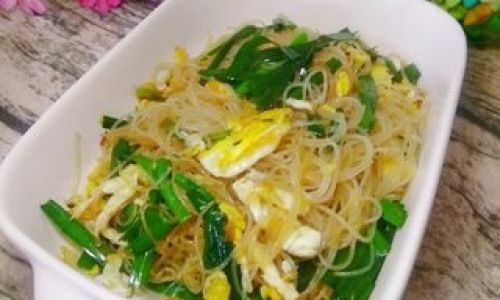
In a small bowl, mix together 2 tablespoons of soy sauce, 1 tablespoon of oyster sauce, a teaspoon of sesame oil, a pinch of white pepper, and a pinch of salt. Adjust the seasoning to taste, remembering that soy sauce and oyster sauce are already salty.
Cooking the Dish
-
Heating the Pan:
Place a wok or large frying pan over medium-high heat. Preheat it for about 2-3 minutes until it’s very hot. A hot pan is crucial for achieving that perfect sear on the ingredients.
-
Adding Oil:
Pour in about 2 tablespoons of cooking oil and swirl it around to coat the bottom and sides of the pan evenly.
-
Stir-Frying the Chives:
Once the oil is hot (but not smoking), add the prepared chives. Stir-fry for about 30 seconds to 1 minute, until they turn bright green and slightly wilted. The goal is to cook them quickly to retain their crispness and fresh flavor.
-
Adding the Noodles:
Push the chives to one side of the pan and add the drained vermicelli noodles to the other side. Stir-fry the noodles for about 2-3 minutes, tossing occasionally to ensure even heating. Be gentle with the noodles to prevent breaking them.

-
Combining Ingredients:
After the noodles have heated through, mix the chives and noodles together in the pan. Pour the prepared sauce over the mixture and stir well to coat everything evenly. Continue to stir-fry for another 1-2 minutes, allowing the sauce to be absorbed and the flavors to meld together.
-
Tasting and Adjusting:
Taste the stir-fry and adjust the seasoning if necessary. You may need to add a bit more soy sauce for saltiness or a dash of sesame oil for richness.
-
Serving:
Transfer the cooked Chives and Vermicelli Stir-Fry to a serving dish. Garnish with chopped green onions, sesame seeds, or a drizzle of chili oil, if desired.
Tips for Perfection
-
Temperature Control: Maintaining the correct heat is crucial. A too-hot pan can burn the ingredients, while a too-cool one will result in soggy, undercooked food.
-
Stir-Frying Technique: Use a quick, tossing motion when stir-frying to ensure even cooking without overcooking. This also helps to prevent sticking.
-
Sauce Balance: The sauce should be flavorful but not overpowering. Adjust the quantities based on your personal preference and the quality of the ingredients.
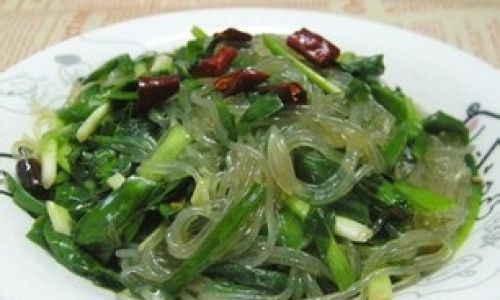
-
Don’t Overcrowd the Pan: Overcrowding can reduce the pan’s heat and cause steaming, which ruins the stir-fry’s texture. If necessary, cook in batches.
-
Freshness Matters: Always use fresh chives and high-quality noodles for the best results. Freshness significantly impacts the dish’s overall flavor and texture.
Serving Suggestions
Chives and Vermicelli Stir-Fry is a versatile dish that pairs well with various sides. Here are a few suggestions:
- Steamed Rice: The classic pairing that complements the stir-fry’s flavors.
- Soup: A light soup like egg drop soup or miso soup can balance the richness of the stir-fry.
- Vegetable Side Dish: Simple stir-fried vegetables like broccoli, bell peppers, or snap peas add color and variety to the meal.
- Protein: For a more filling meal, serve the stir-fry alongside grilled chicken, shrimp, or tofu.
Conclusion
Chives and Vermicelli Stir-Fry is a delightful example of Chinese home cooking at its finest. With its simple ingredients and straightforward preparation, it’s a dish that anyone can master with practice. By following the steps outlined in this guide, paying attention to detail, and experimenting with seasoning, you’ll soon be able to create a stir-fry that’s both visually appealing and bursting with flavor.
Remember, cooking is an art that requires patience, practice, and a willingness to learn. Don’t be discouraged if your first attempt doesn’t meet your expectations. With each try, you’ll gain a better understanding of the ingredients and techniques, bringing you closer to mastering this beloved Chinese dish.
So, the next time you’re in the mood for a quick, flavorful meal, give Chives and Vermicelli Stir-Fry a try. It’s not just a dish; it’s a journey through the essence of Chinese cuisine, one bite at a time. Enjoy your culinary adventure!
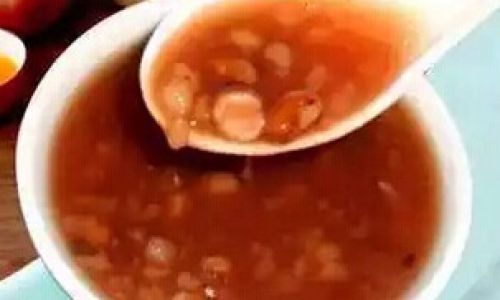
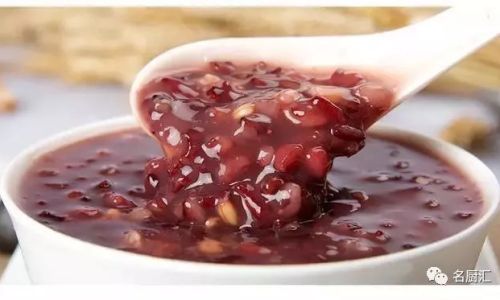
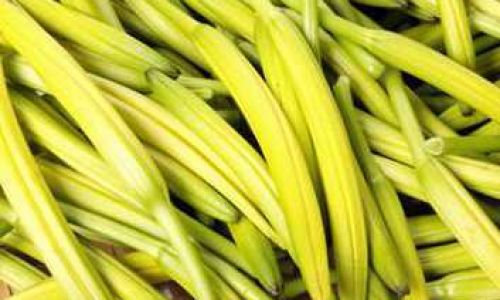

0 comments